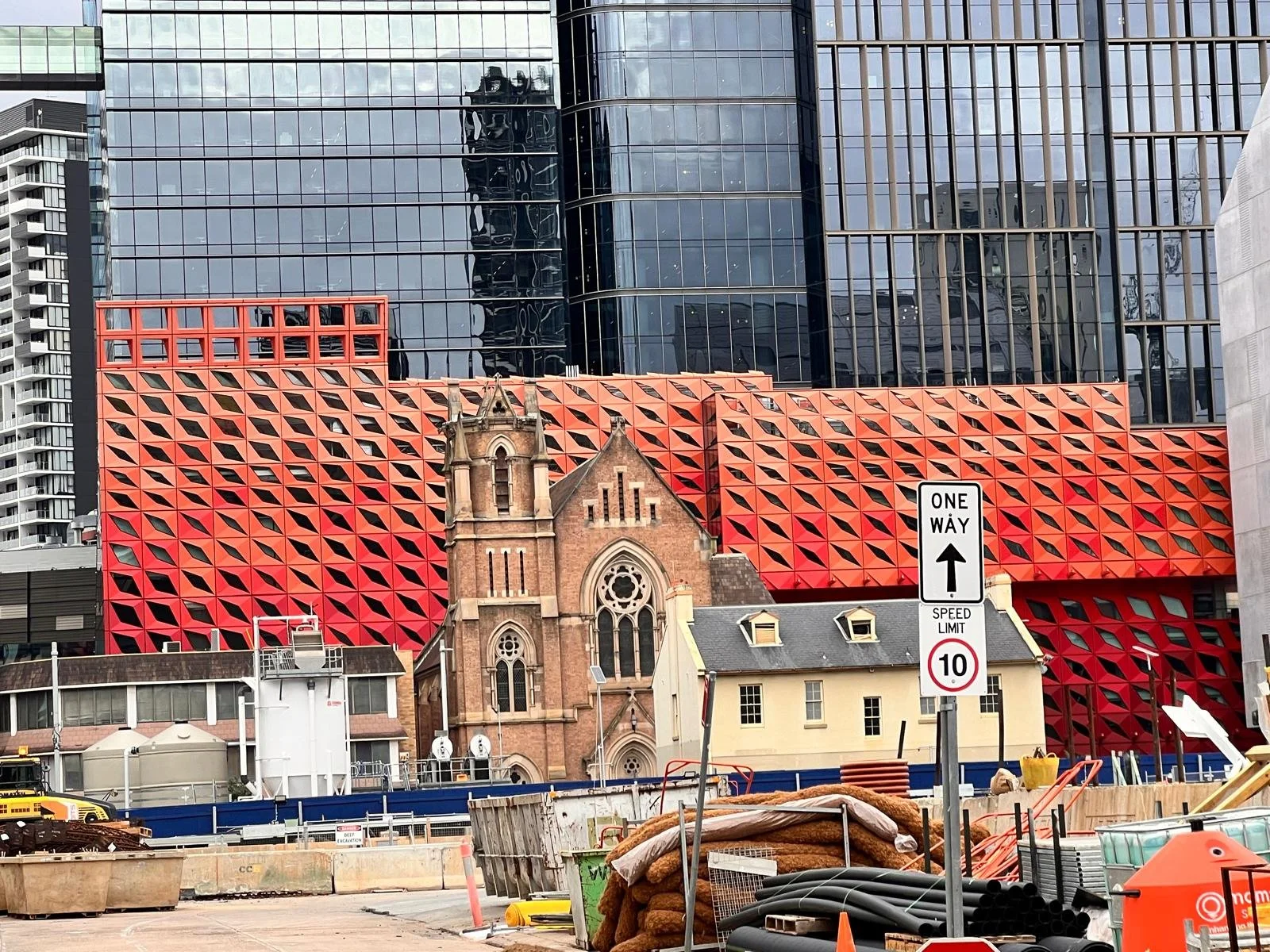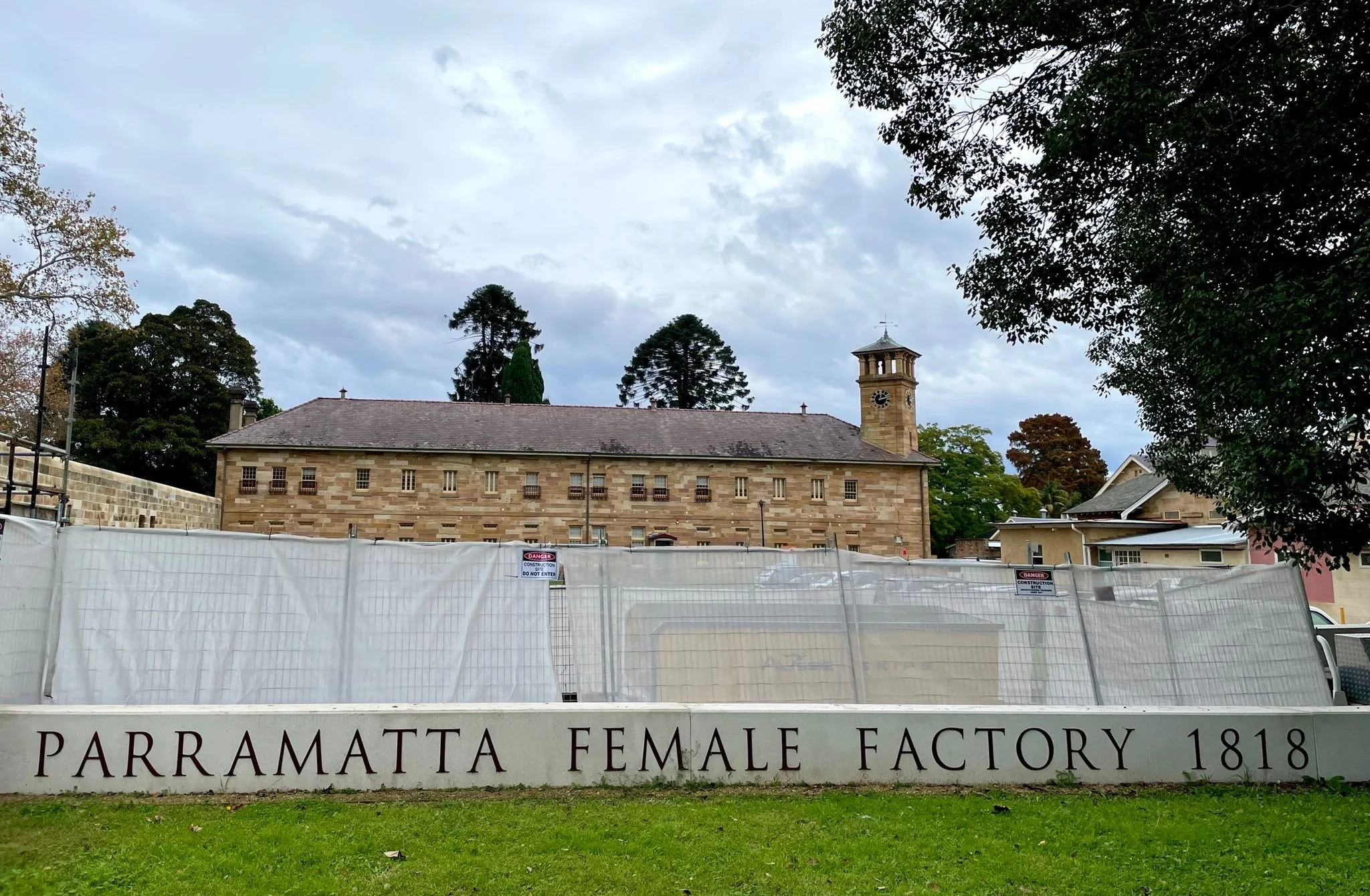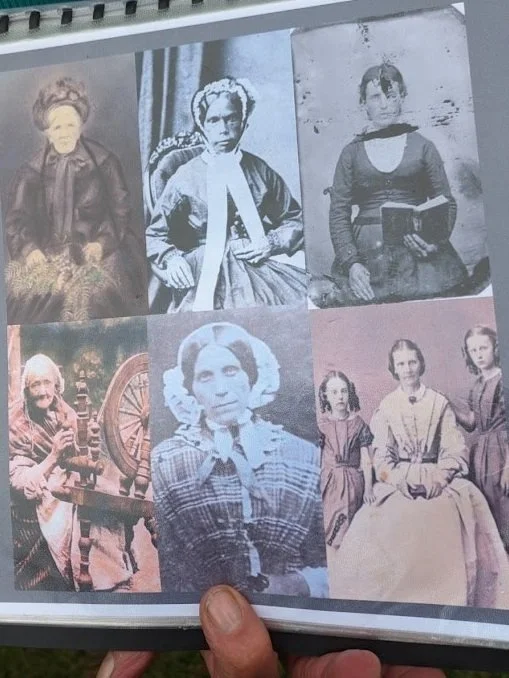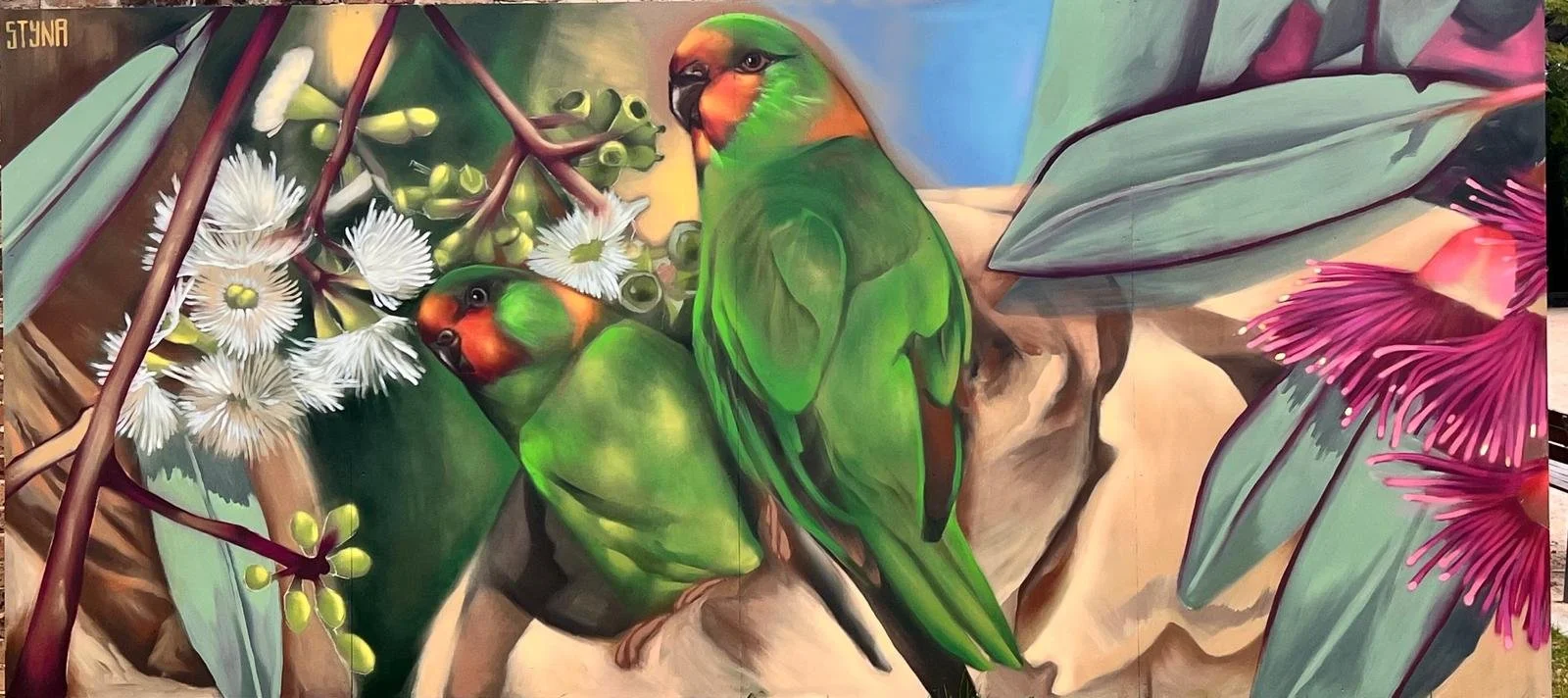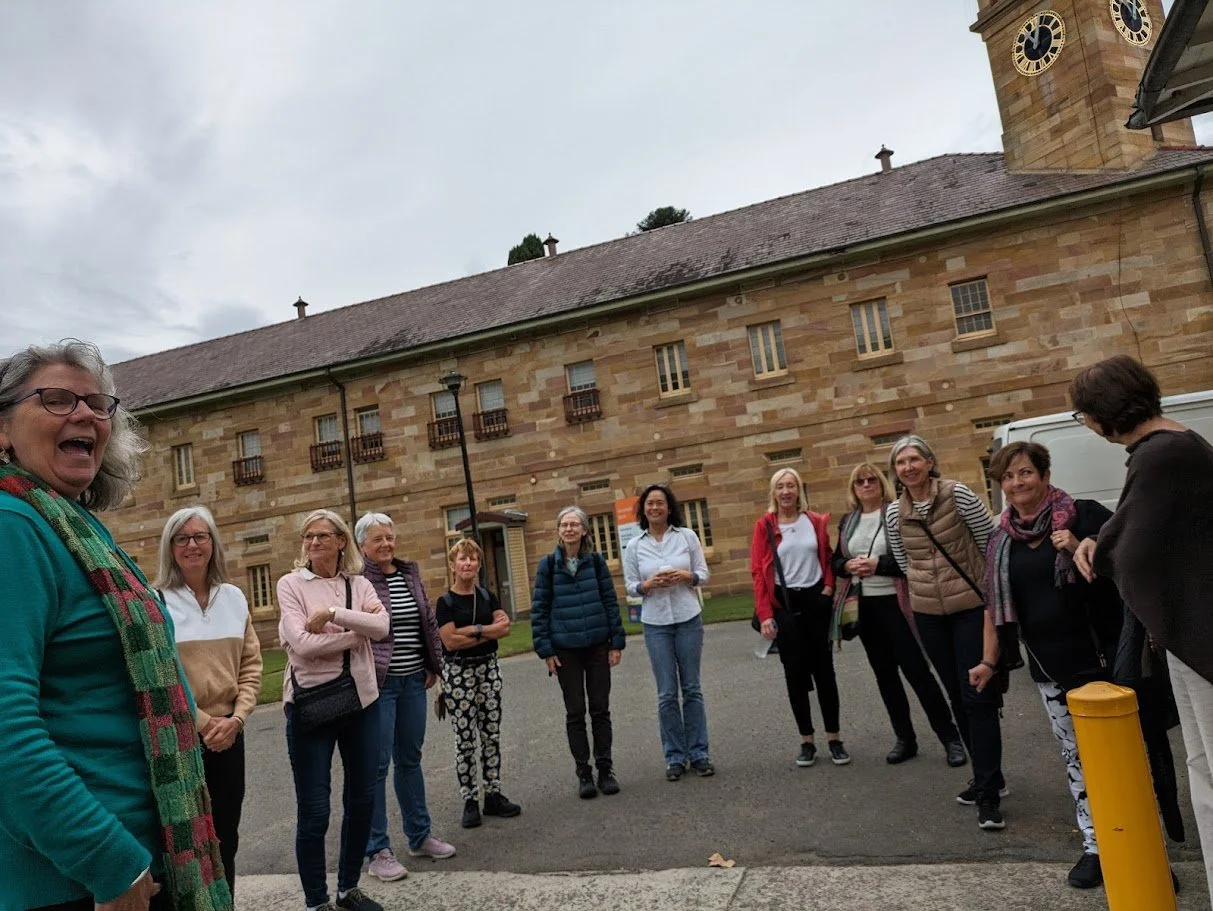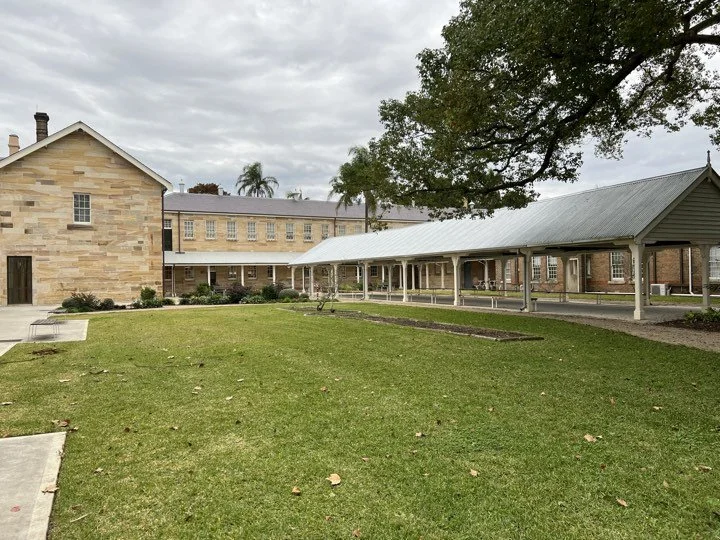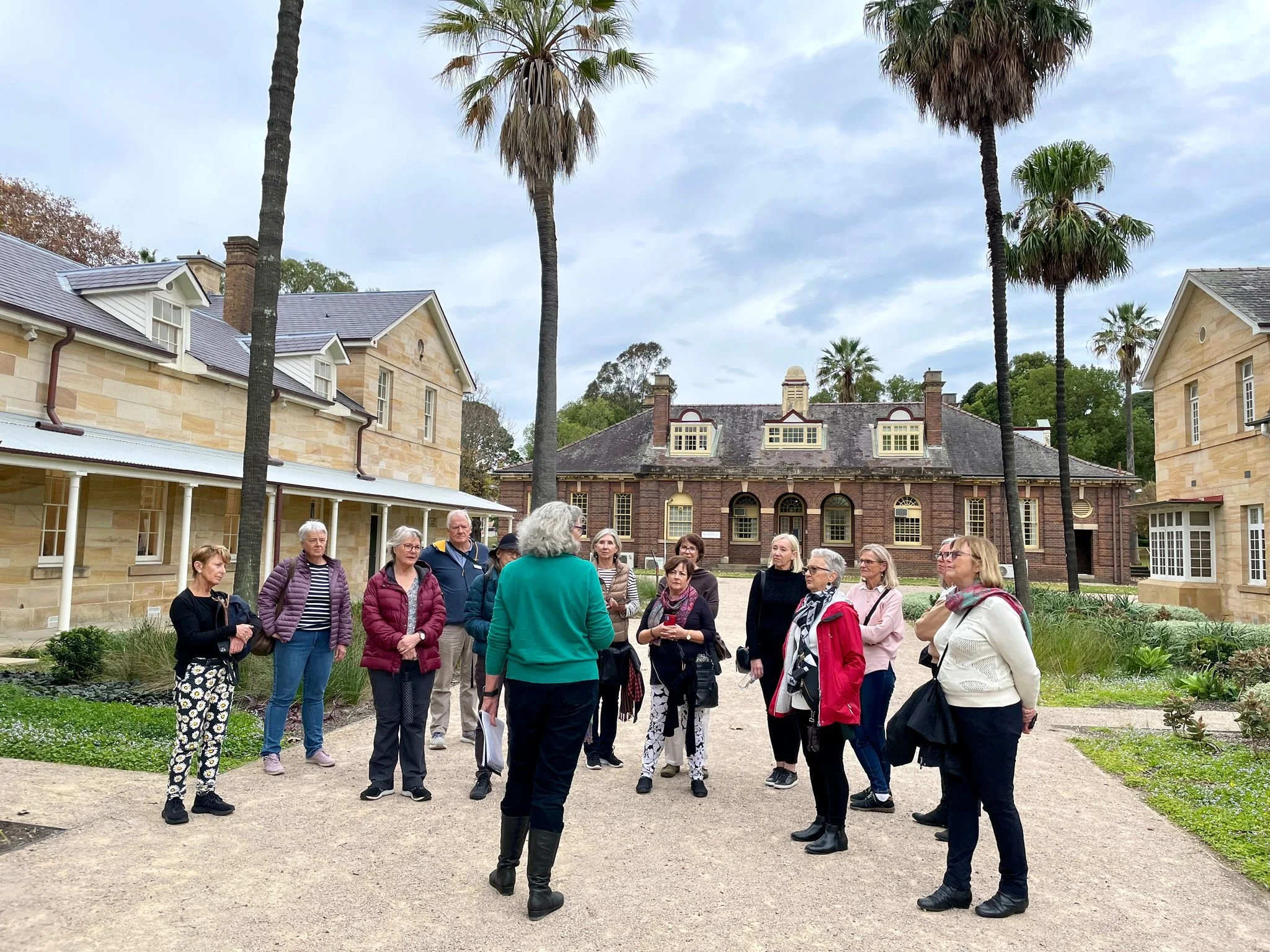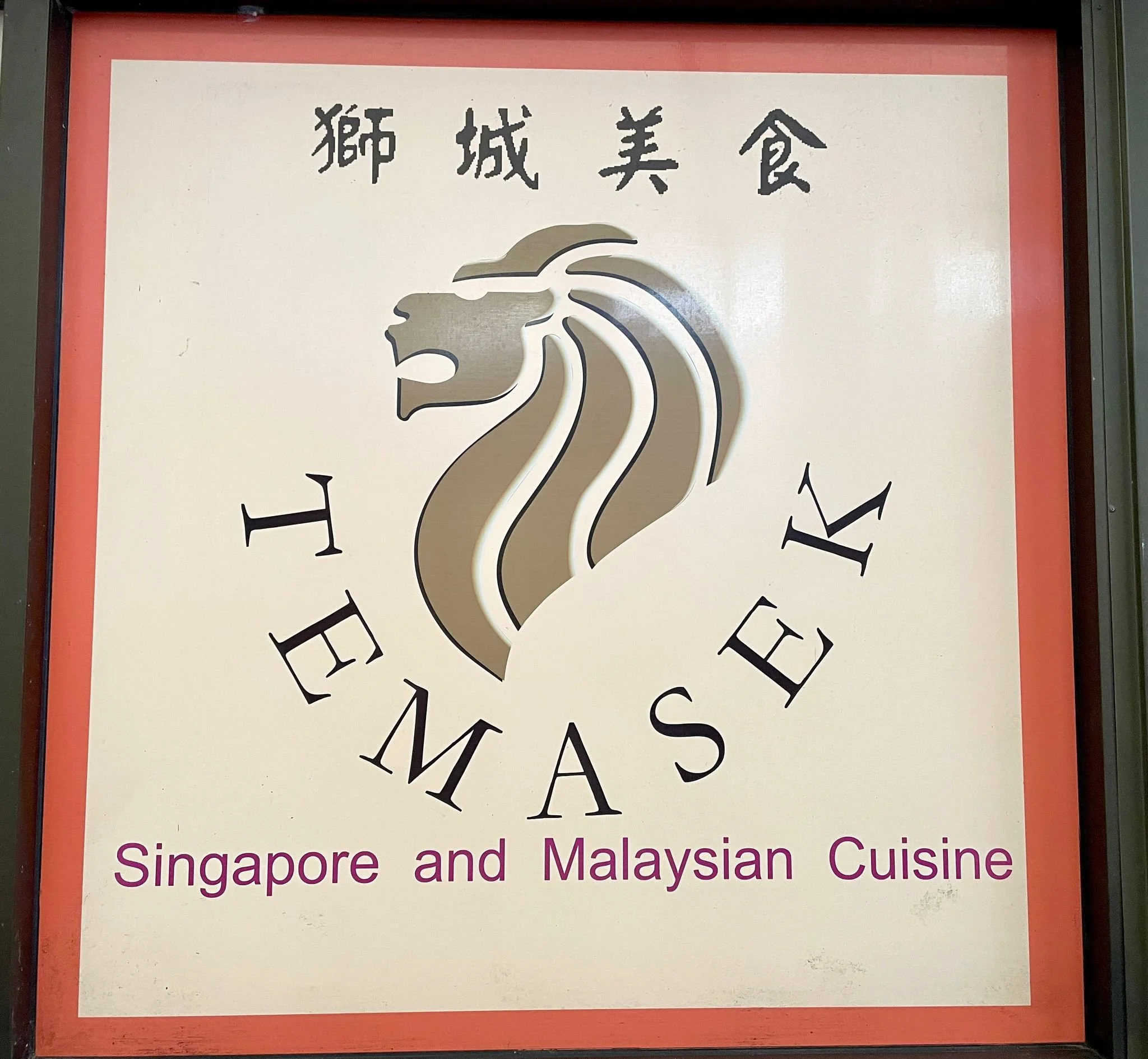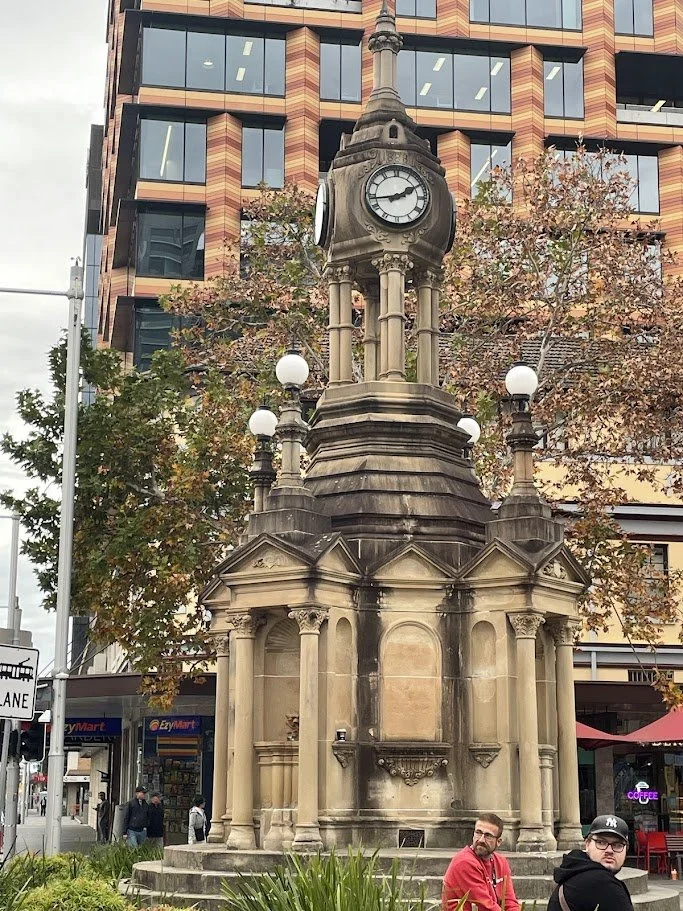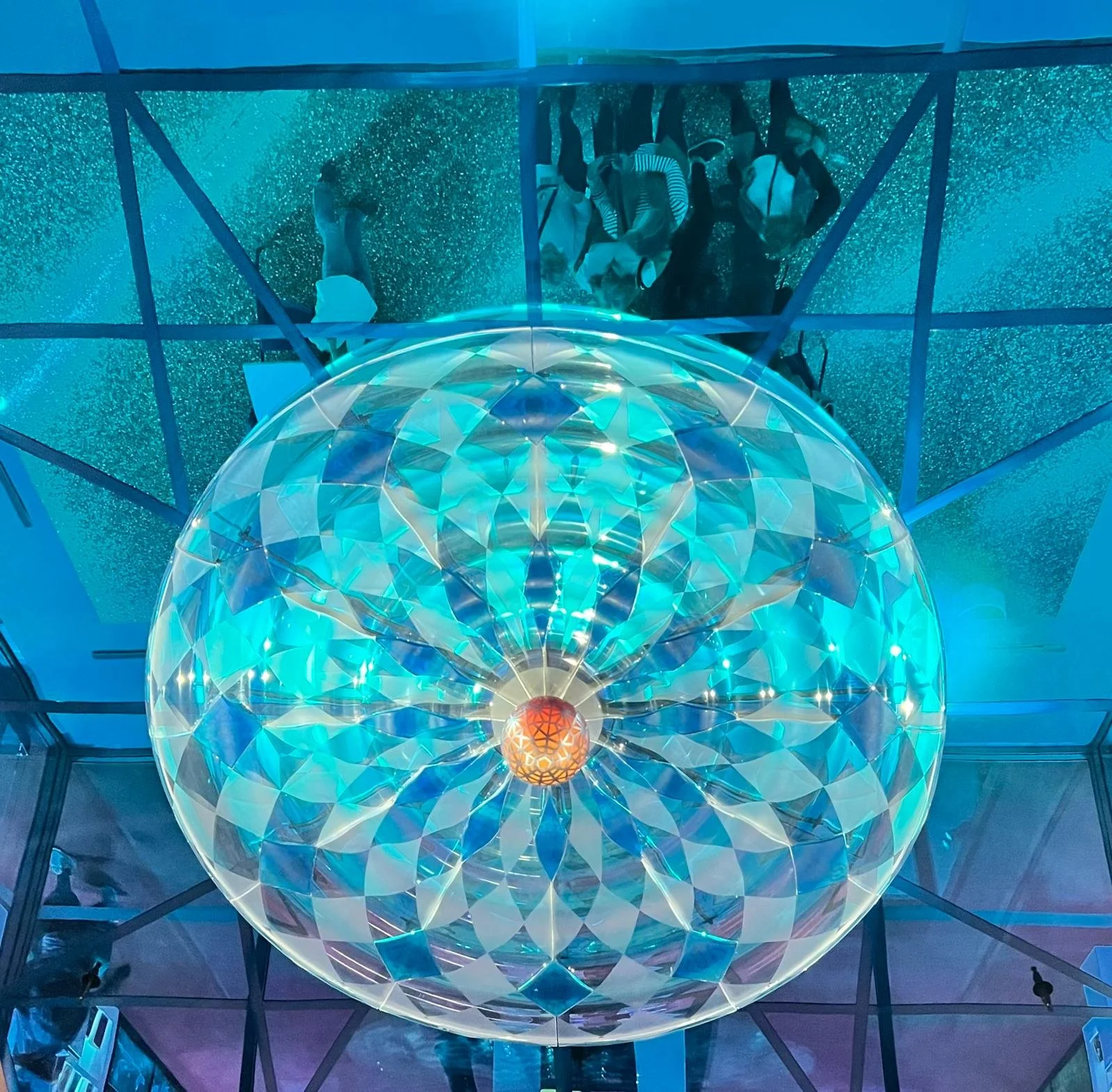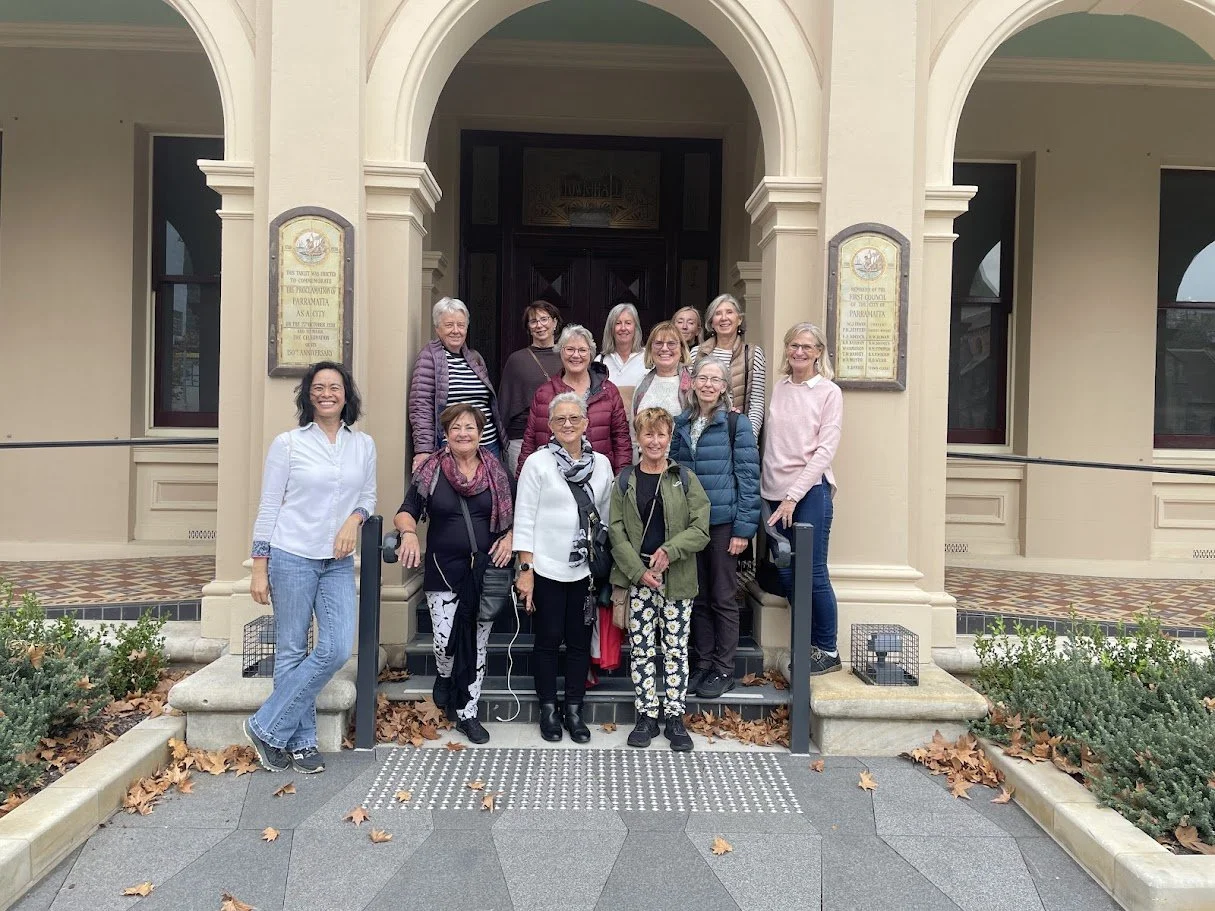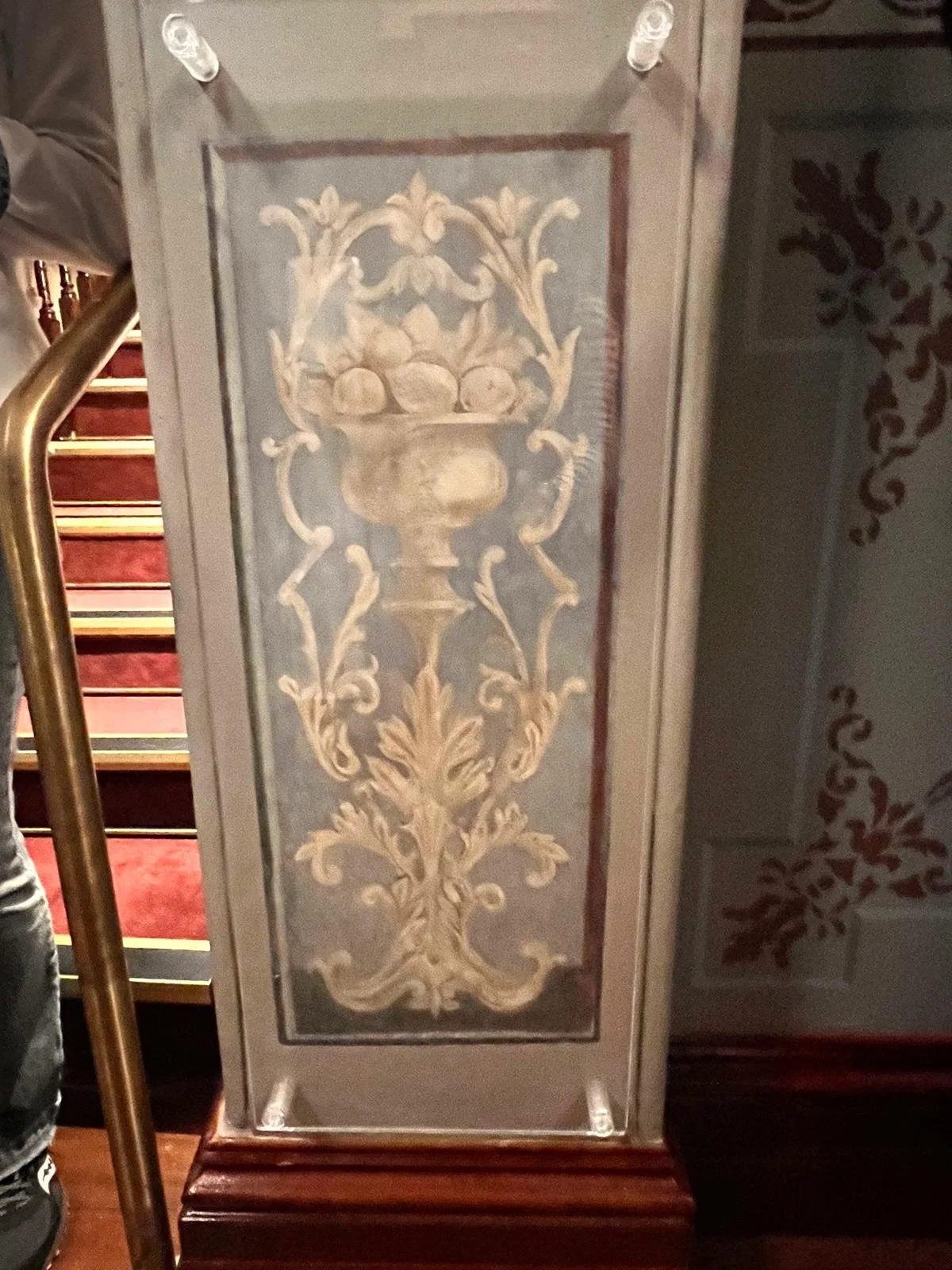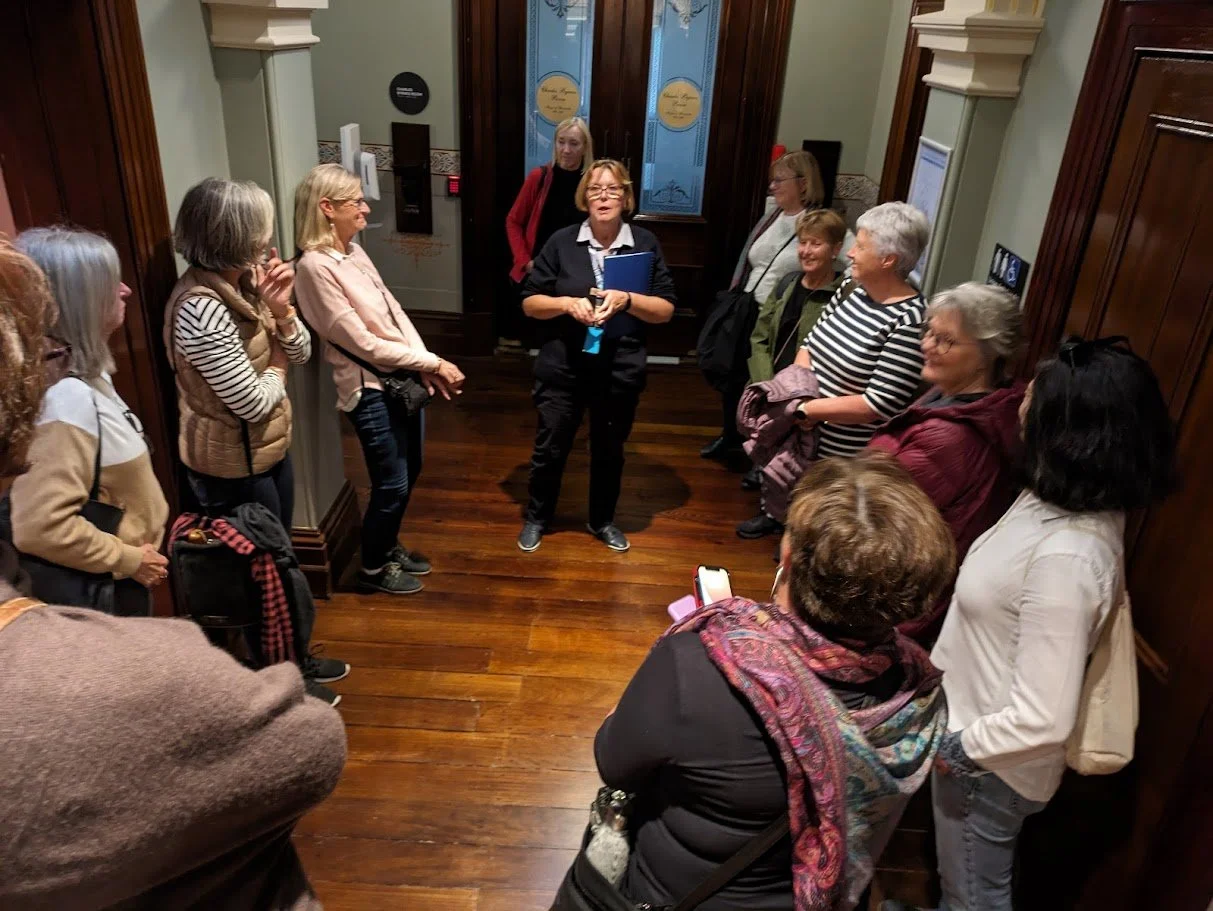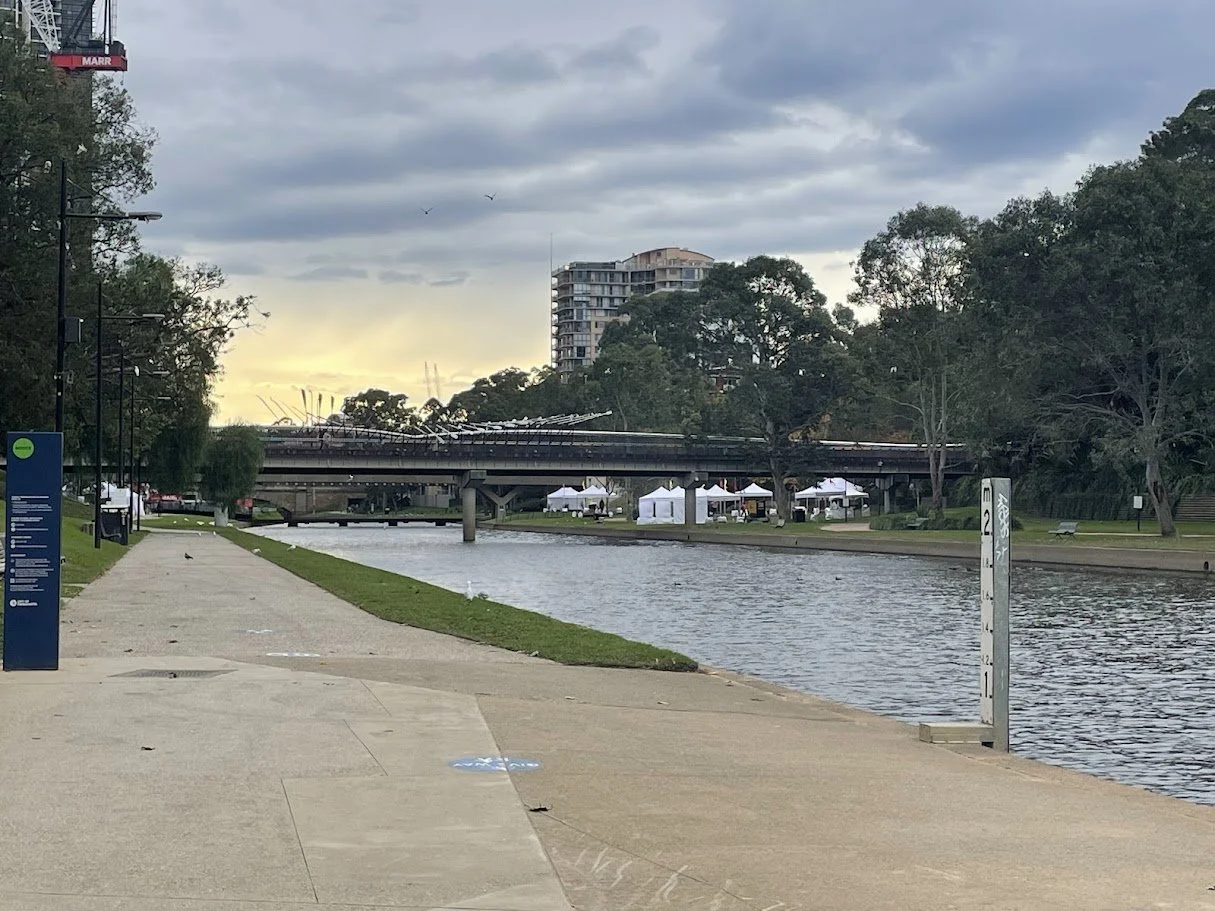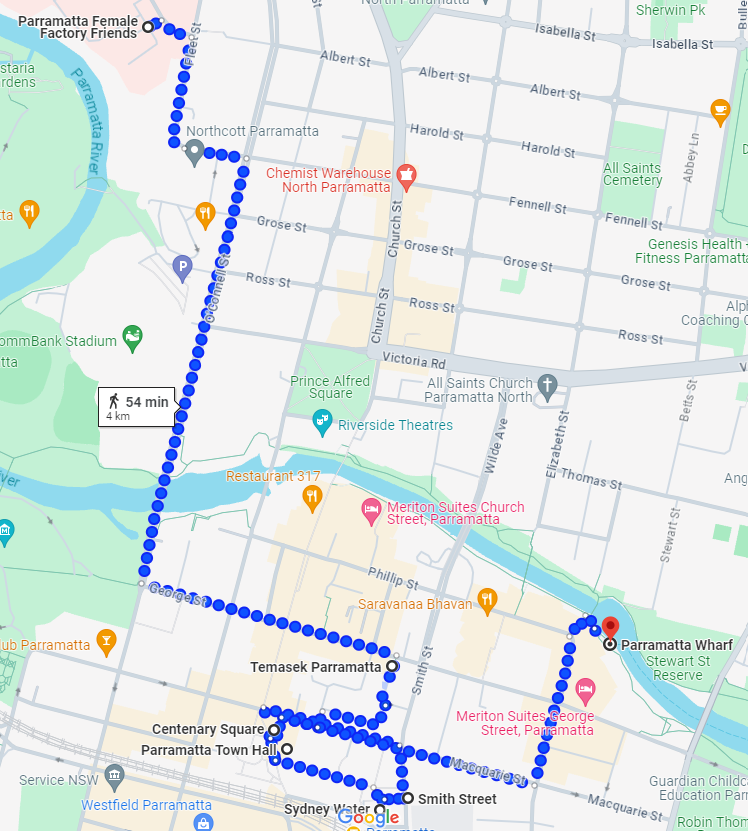Parramatta
Background
Parramatta was founded in 1788 due to its good farming possibilities. It is the second oldest city in Australia. The blend of old and new is evident everywhere throughout our walk around the suburb. It was originally named Rose Hill and renamed Parramatta in 1791, after the Burramatugal custodians, thought to mean ‘place where the eels lay down’ or ‘head of waters’.
The Parramatta Female Factory
We commenced our day at the Parramatta Female Factory with our guide Gay, a passionate member of Friends of the Female Factory where 5 - 7,000 (unmarried or unassigned or reoffending) convict women were housed between 1821 - 1840. Originally women convicts were housed above the Parramatta Gaol. Advocacy from Elizabeth Fry, Samuel Marsden and others led to the dedicated female factory being commissioned by Governor Macquarie. With convicts ceasing to be transported from 1840 it became a Benevolent Asylum for sick and destitute convict women, then for Invalid and Lunatic convicts and finally The Lunatic Asylum in 1849.
Three Female Factory buildings remain and the Clock Tower.
The women of the Female Factory
Of the women convicted and transported to NSW, over 90% had 2 or less convictions, suggesting the majority were not of a crime class. Over 90% were transported for theft, largely related to common opportunities and items that could easily be exchanged for money in order to survive. The remaining female convicts had been convicted of breaking, vagrancy and violent crimes.
Just over half of the English were literate and just under half of the Irish. There was little difference between convict women’s literacy and that of the general population.
The women brought over 180 trades with them, including the trades of straw plaiting, knitting, spinning and laundry employed in the Factory.
These women were the mothers, sisters, workers, teachers, businesswomen of the colonies. They were the hidden revolution of thought, ideas and actions that became a significant part of the Australian character we are familiar with today.
The women were segregated into three classes - well behaved to poorly behaved. The Merit or First Class women could keep their children with them until the age of four when they were sent to orphanages. The Third or Crime Class women had typically committed crimes in the colony. Accommodation, kitchens and workshops were duplicated to keep the classes separate. The Merit Class were eligible for assignment, e.g. caring for colony families or teaching, or, in the Factory they were employed as hat makers, wool pickers, needleworkers and washed laundry; for all of which they received a small payment. The Crime Class were confined to the Factory, and tasked with breaking stones and oakum picking (caulk for ships).
A man desiring a wife would approach the matron and any of the women willing to be married would be walked past him until someone took his fancy, a process that took up to three days.
October 26, 1827, Riot Day was the day women of the Crime Class rioted in response to reduced rations. Their punishment was a further reduction. Around 100 women broke out of the Factory and went to Parramatta where they were ‘convinced’ by soldiers to return.
We thanked Gay from the Friends of the Female Factory and headed for lunch at the iconic three decade old Temasek Singaporean Malaysian restaurant for a great value lunch special.
We then headed off towards Parramatta Square passing the iconic Roxy Theatre, opened in February 1930, reopened in 1976, refurbished in 1982 and 1988, closed in 2002, opened as a nightclub in 2004, proposed as a multi purpose space with a 27 storey building in 2017. Phew! Originally it had 1923 seats, a Christie theatre organ which was reputedly one of the largest and finest in the state, and opened with the ‘Talkies’. We walked past St John’s church, declared an Anglican parish in 1802. Today the church offers worship in English, Cantonese, Mandarin and Farsi.
We found the Centennial Memorial Fountain and clock tower. The fountain is a legacy from the Centennial Celebrations of 1888, the clock was installed in 1909.
We admired two public sculptures, the first, Place of the Eels, a replica of the bus used by the Parramatta rugby league team to hold meetings in during the 1980s, as a result of over enthusiastic fans burning down the club house. It also acknowledges Rosie Bint Broheen, a Lebanese women who migrated in the 1890s and eventually became one of the first Lebanese women to purchase property in Parramatta in 1922.
The second steel sculpture of water drops, Angle of Incidence by Julia Davis, was commissioned by Sydney Water in 2009.
We arrived at PHIVE, Parramatta’s new community, cultural and civic hub where we met our guide, Uli, to tour around the Old Town Hall. We started at Centenary Square, with Uli explaining it was originally a swampy area, and later, marketplace. The Council Chamber was built in 1881, the Town Hall in 1883, the Town Clerk’s room was originally a library. The first community event was presented by the Parramatta Glee Club. A few famous visitors had graced the building with their presence: Banjo Patterson for a lecture about the Boer War, the Von Trapp family singers in the 1950s and Johnny O’Keefe three times even though he called the mayor a square. The building is still used for functions and Australian Citizen ceremonies. The building was revitalised between 2021 and 2023.
We said goodbye to our terrific guide and headed home, some of us by ferry, a great way to end a great day.
References
https://en.wikipedia.org/wiki/Parramatta
https://parramatta-female-factory-her-story-our-story.com/the-female-factory-women/
https://www.parragirls.org.au/#:~:text=Once%20the%20destination%20of%20unassigned,are%20descended%20from%20these%20women
https://www.smh.com.au/goodfood/sydney-eating-out/parramatta-s-iconic-laksa-shop-is-moving-here-s-why-you-should-visit-the-og-spot-while-you-still-can-20240416-p5fk6w.html
https://en.wikipedia.org/wiki/Roxy_Theatre,_Parramatta
https://www.uapcompany.com/news/city-of-parramatta-place-of-the-eels
https://historyandheritage.cityofparramatta.nsw.gov.au/research-topics/parramatta-square/keeping-good-time-clocks-of-parramatta
